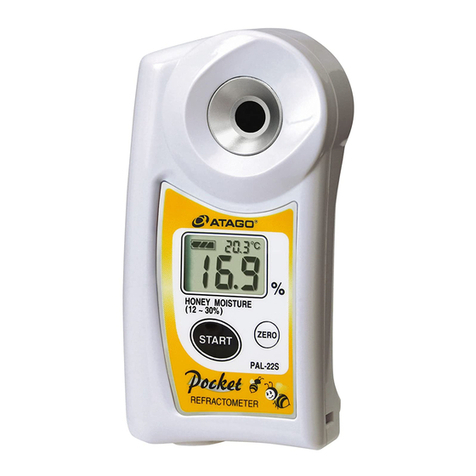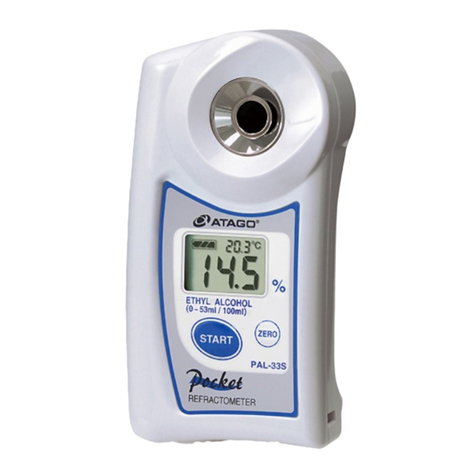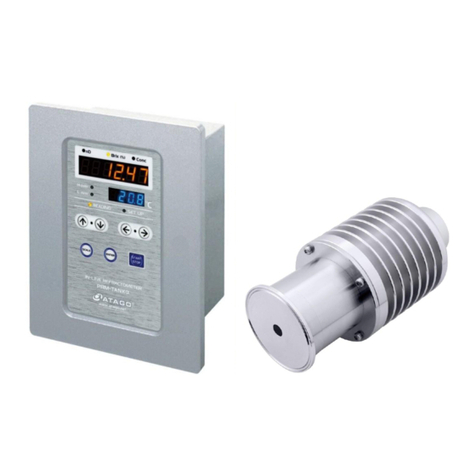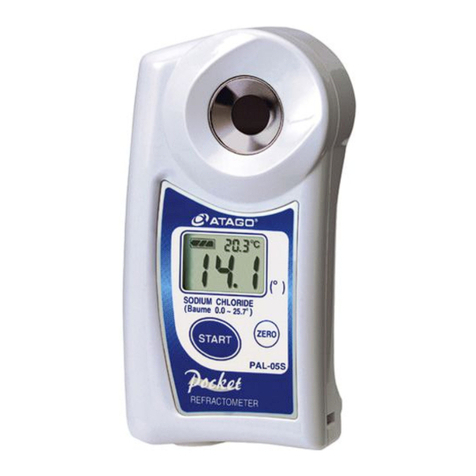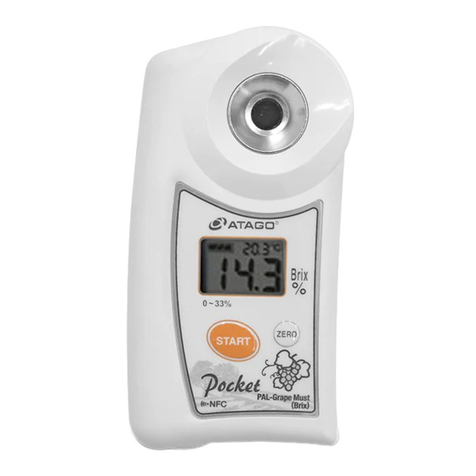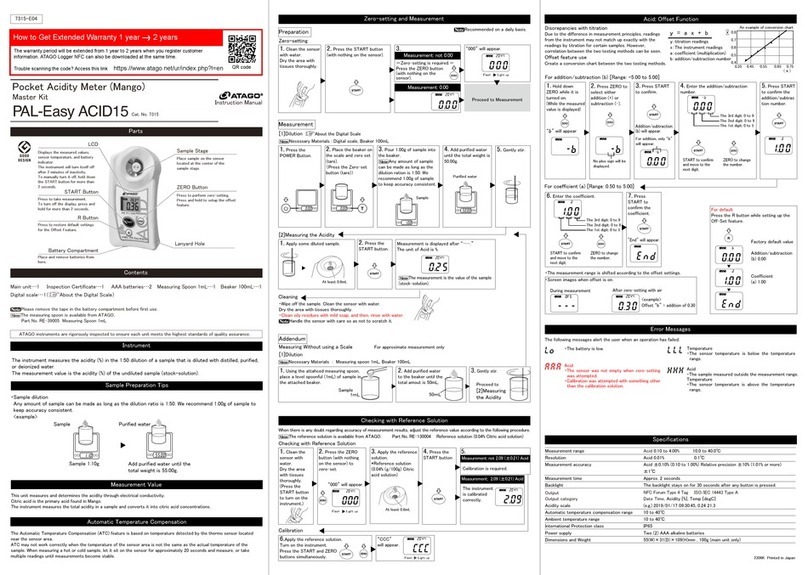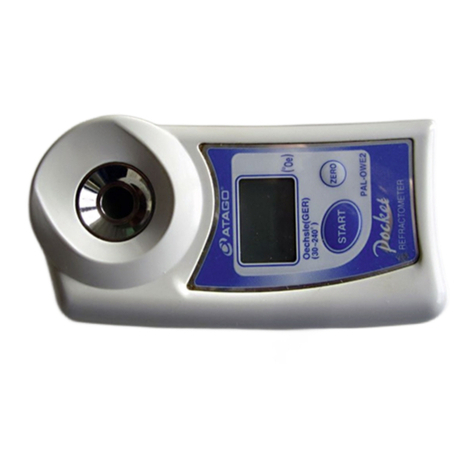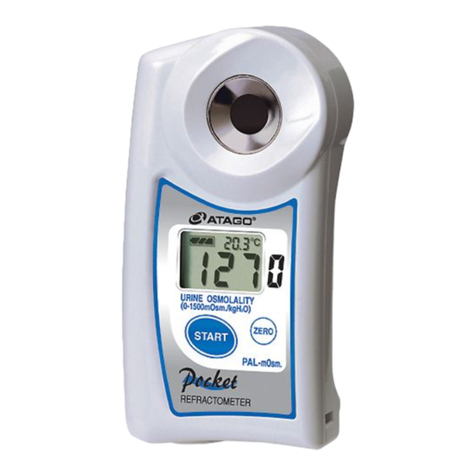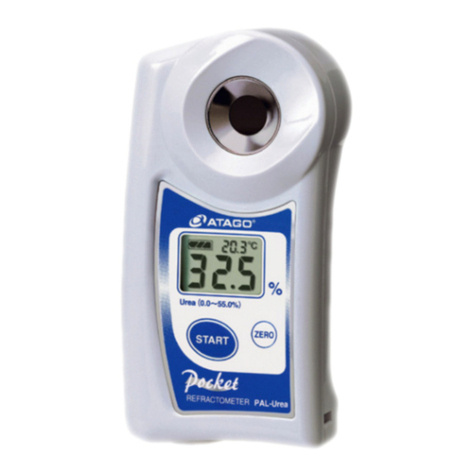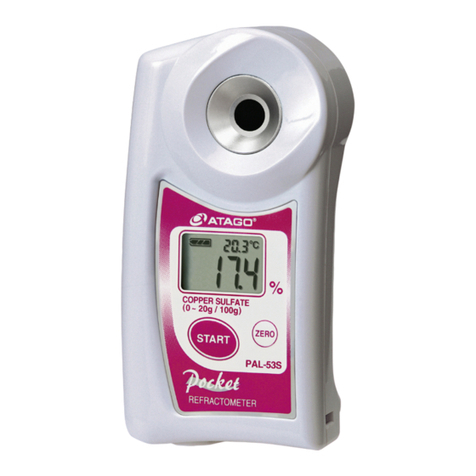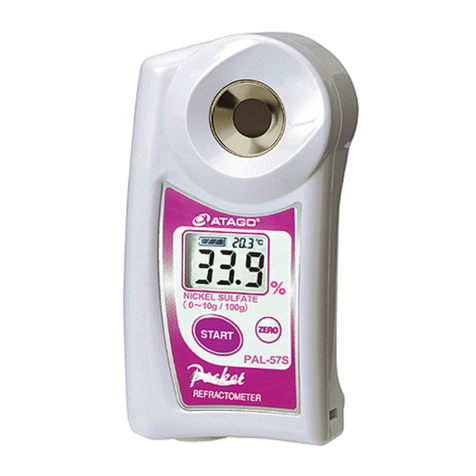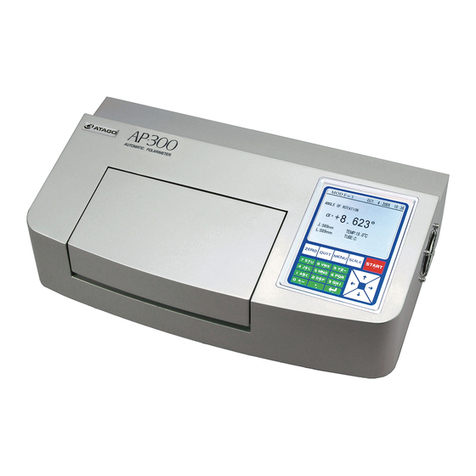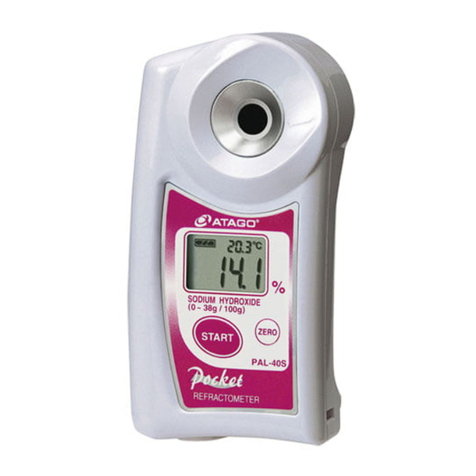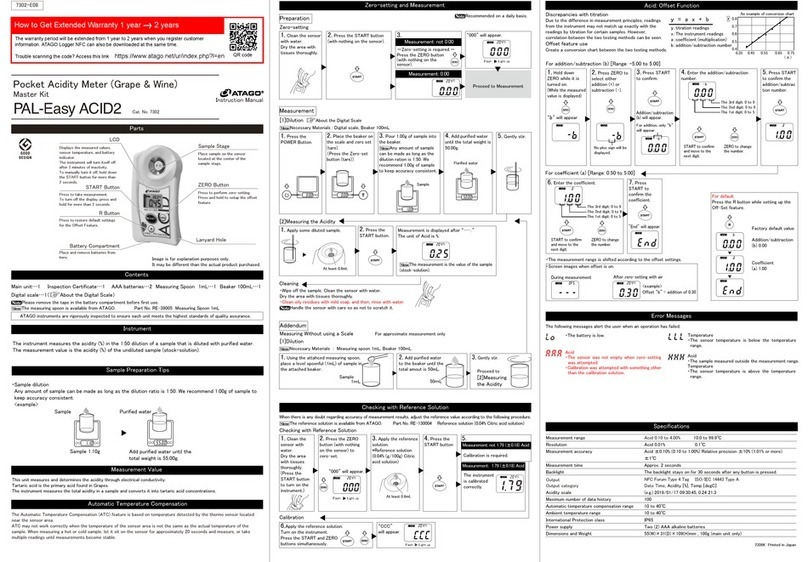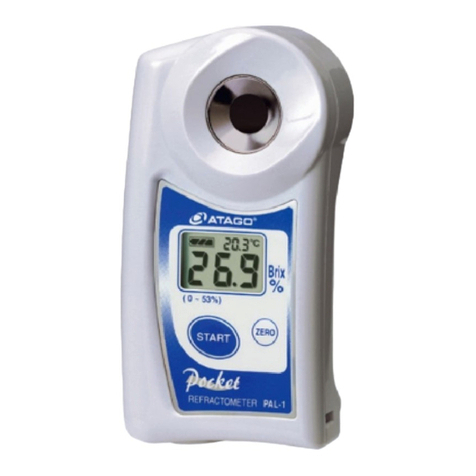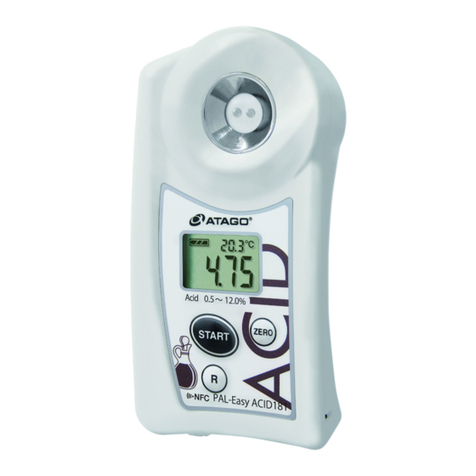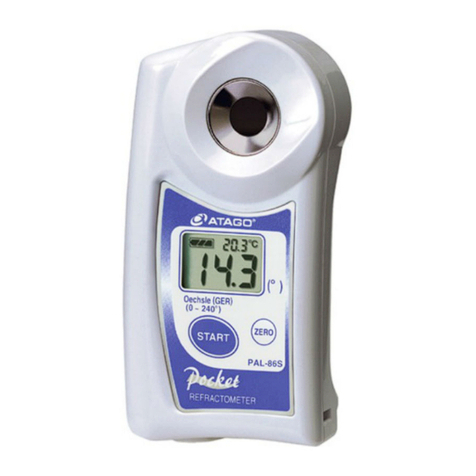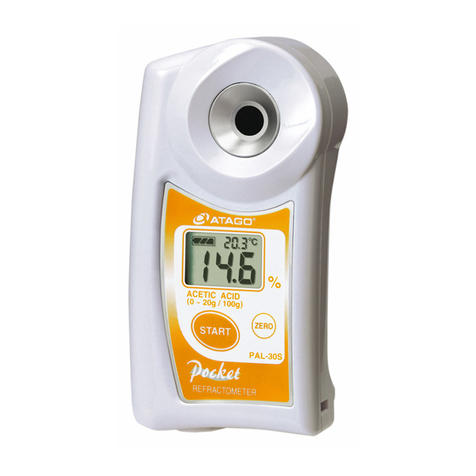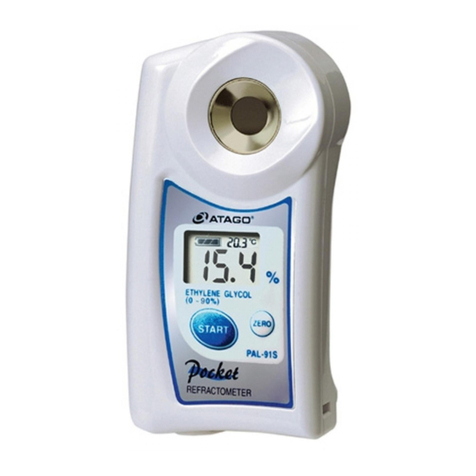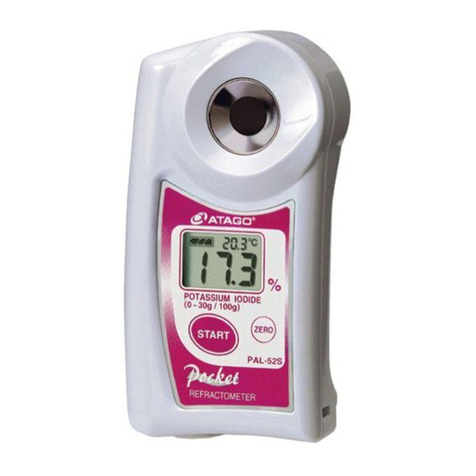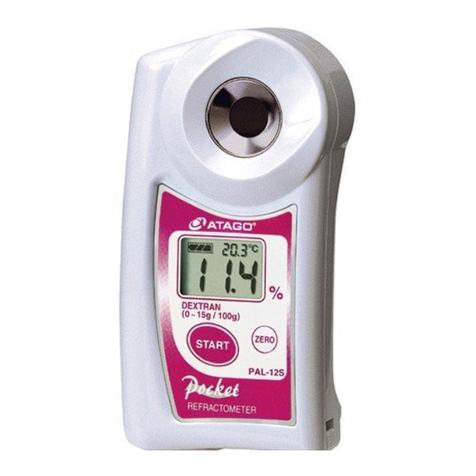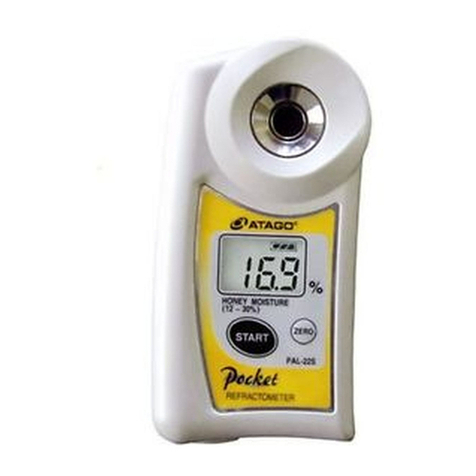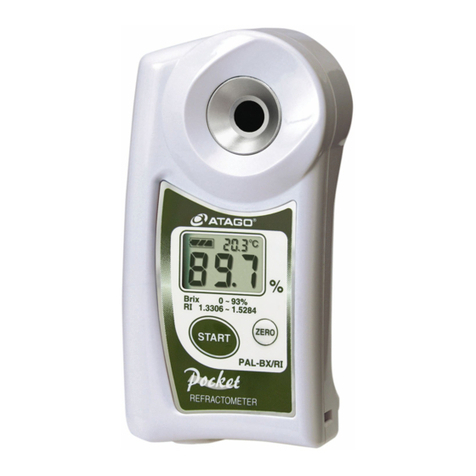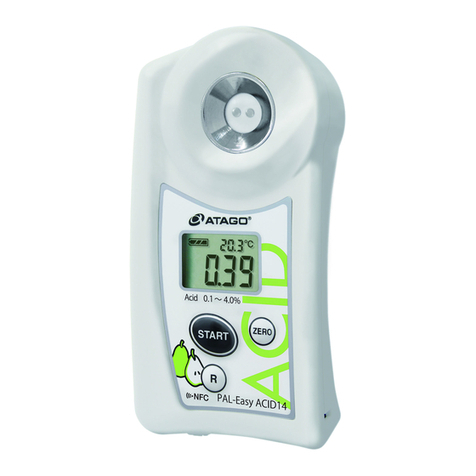
- 1 -
Precautions for use
ntroduction
Thank you for purchasing the instrument. Carefully read and follo all instructions. Keep this manual for
future reference.
Safety nstructions
Read and follo all safety instructions before operating the instrument.
Failure to comply ith the follo ing instructions may result in personal injury or property damage.
WARN NG
Ensure safety when handling hazardous materials.
Observe precautionary measures and use protective
equipment, Be aware of the hazards of such chemicals
and emergency response guidelines.
Do not drop the instrument or subject it to strong
physical shock.
T GO may not be held liable for any injury or damage
arising in connection with handling of hazardous
materials during the use of the instrument.
Do not attempt to repair, modify, or disassemble the
instrument.
CAUT ON
Carefully read this manual to have basic knowledge of
the function of each component.
Some acids may corrode the
and/or (metal) sample stage, which may cause
erroneous measurements.
Do not use metal tools, such as a spoon, as they may
scratch the optical path window, resulting in erroneous
measurements.
Only use the specified battery type. Observe proper
polarities, properly aligning the anodes and cathodes.
Store the instrument away from direct sunlight/heat
sources and excessive amounts of dust/debris.
Store the instrument in a dry environment.
Do not expose the instrument to a rapid change in
ambient temperature.
Do not subject the instrument to strong vibration.
Do not subject the instrument to extreme cold
temperature.
Do not place the instrument under anything heavy.
Have the batteries and battery compartment cover
removed during air transport.
〈Chemical Resistance of Body Case〉
The body case is made of BS resin. Do not expose it to water vapor or solvents.
Aqua regia chromic acid chlorosulfuric acid hydrobromic acid nitric acid hydrofluoric acid sulfuric acid phosphoric acid ethyl
acrylate butyl acrylate ethyl acetoacetate acetophenone benzyl benzoate ethylbenzene ethylene oxide ethylenediamine
ethylene chlorohydrin epichlorohydrin ethyl chloride benzyl chloride methyl chloride chlorinated solvents xylene (xylol) cresol
chloroacetone chlorotoluene chloroform acetic acid amyl acetate isopropyl acetate ethyl acetate butyl acetate propyl acetate
methyl acetate diphenyl oxide diisopropyl ketone carbon tetrachloride dioxane cyclohexanone (anone) dichlorobenzene dibutyl
phthalate (DBP) dimethylformamide (DMF) dimethylaniline phenol thioalcohol (mercaptan) tetrahydrofuran (THF) trichloroethylene
toluene (toluol) ethylene dichloride dichloromethane nitroethane nitropropane nitrobenzene nitromethane perchlorethylene
fluorobenzene methyl methacrylate methyl isobutyl ketone methyl ethyl ketone monochloroacetic acid monochlorobenzene liquid
chlorine thionyl chloride sodium peroxide bromine benzene lacquer
m
Solvents that are harmful to the plastic body case include but are not limited to the above substances.
